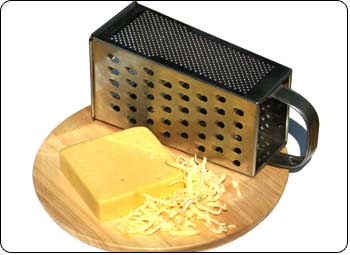Your restaurant point-of-sale system is one of the keys to your
smooth running operation - helping to keep the orders flowing correctly
and the cash coming in. But are you overlooking some of the ways your
POS software
could help you boost your restaurant's bottom line? Here's 5 common
features that many restaurant owners neglect - but that can make a real
impact on your profit!
1. Marketing

If
you are not tracking individual customer behavior with your
point-of-sale system and tying that to your marketing program, you're
missing out on a huge opportunity to connect with your customers, boost
repeat visits, and increase ticket averages. Your POS software may
have a
customer database,
that lets you find customers who haven't visited recently or who love
your Chicken Parmesan. Your POS software may even have a
built-in loyalty program, that encourages customers to identify themselves and lets you reward customers for purchases. It may tie in to a
marketing automation system,
that helps you keep in touch with customers via e-mail, text message
and social media. Don't let the goldmine of customer data sit
untouched! Even a simple action, such as welcoming new customers with a
follow up email or postcard, can make a huge difference on your bottom
line.
2. Inventory

No
one likes counting cans and boxes and spending long nights doing data
entry. That's why very few restaurant operators use any of the
inventory and food cost controls
they've got built into their POS systems. But you can make a
difference on your food cost without getting bogged down in all the
paperwork. Just pick 5 high cost, high risk or "indicator" items. High
cost - like steak or cheese. High risk - like liquor, beer or wine.
And "indicator" items, such as cups or boxes, which can point out when
food items are going out unaccounted for. Just pick 5 to start, set
them up in your point-of-sale software, and count them on a weekly
basis. You'll learn valuable information about your operation, and send
an important signal that you are paying attention to food costs
3. Customer Groups

Does
your point-of-sale software let you track house accounts? Does it have
an accounts receivable function? Does it track businesses and hotels?
How about charity affiliation programs? These bells and whistles are
designed to help you make more money! You may have never taken the time
to set them up, but it's worth the investment in learning. These
features allow you to provide special service to some of your
potentially most profitable customers, and those who will recommend your
restaurant in the community.
4. Labor

Of
course, your standard restaurant POS system gives you timekeeping
functions so you can feed your payroll system. But are you taking
advantage of all the
management tools
available to keep on top of this critical cost center? Alerts when
employees approach overtime can help your managers keep labor costs
where they are expected to be. Forecasting tools based on historical
sales can help you build a smart schedule. On-the-spot reports, graphs
and alerts will let you know if your labor costs are meeting your goals.
Teach your managers how to use these tools on every shift: when to
send extra staff home, or when to call someone in if labor is too low
(as that affects customer service).
5. Menu Analysis

Your
menu may be a handed-down family tradition, or it may change regularly
with the times. But every item that earns a spot on your menu must pull
its weight. Do you know which items are most profitable, and which are
costing you money? Can you accurately predict how many lasagna
dinners you'll need next Friday, so you don't end up with wasted food at
the end of the night? Which coupons are bringing in business, and
which are duds? Buried somewhere in the hundreds of
POS system reports
are the answers you need. Most restaurant owners get in the habit of
skimming a summary report once in a while. Take some time on a
quarterly basis to review your menu performance reports, update your
food cost comparisons, and evaluate your couponing. Use the information
your POS system has been gathering to help make informed decisions to
improve your bottom line!






 If
you are not tracking individual customer behavior with your
point-of-sale system and tying that to your marketing program, you're
missing out on a huge opportunity to connect with your customers, boost
repeat visits, and increase ticket averages. Your POS software may
have a
If
you are not tracking individual customer behavior with your
point-of-sale system and tying that to your marketing program, you're
missing out on a huge opportunity to connect with your customers, boost
repeat visits, and increase ticket averages. Your POS software may
have a  No
one likes counting cans and boxes and spending long nights doing data
entry. That's why very few restaurant operators use any of the
No
one likes counting cans and boxes and spending long nights doing data
entry. That's why very few restaurant operators use any of the  Does
your point-of-sale software let you track house accounts? Does it have
an accounts receivable function? Does it track businesses and hotels?
How about charity affiliation programs? These bells and whistles are
designed to help you make more money! You may have never taken the time
to set them up, but it's worth the investment in learning. These
features allow you to provide special service to some of your
potentially most profitable customers, and those who will recommend your
restaurant in the community.
Does
your point-of-sale software let you track house accounts? Does it have
an accounts receivable function? Does it track businesses and hotels?
How about charity affiliation programs? These bells and whistles are
designed to help you make more money! You may have never taken the time
to set them up, but it's worth the investment in learning. These
features allow you to provide special service to some of your
potentially most profitable customers, and those who will recommend your
restaurant in the community.  Of
course, your standard restaurant POS system gives you timekeeping
functions so you can feed your payroll system. But are you taking
advantage of all the
Of
course, your standard restaurant POS system gives you timekeeping
functions so you can feed your payroll system. But are you taking
advantage of all the  Your
menu may be a handed-down family tradition, or it may change regularly
with the times. But every item that earns a spot on your menu must pull
its weight. Do you know which items are most profitable, and which are
costing you money? Can you accurately predict how many lasagna
dinners you'll need next Friday, so you don't end up with wasted food at
the end of the night? Which coupons are bringing in business, and
which are duds? Buried somewhere in the hundreds of
Your
menu may be a handed-down family tradition, or it may change regularly
with the times. But every item that earns a spot on your menu must pull
its weight. Do you know which items are most profitable, and which are
costing you money? Can you accurately predict how many lasagna
dinners you'll need next Friday, so you don't end up with wasted food at
the end of the night? Which coupons are bringing in business, and
which are duds? Buried somewhere in the hundreds of 